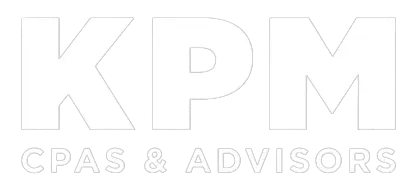Maintaining financial health and making informed decisions are crucial accounting practices for your business or organization. It doesn’t matter if you run a for-profit business or a non-profit, these practices remain essential and you should seek to strengthen your accounting practices. Tasks such as creating budgets, monitoring results, preparing accurate financial statements, and complying with tax and payroll requirements are all aspects of strong accounting practices. These three simple practices outlined below can help you enhance your accounting function and keep your operations running smoothly.
1. Review & Reconcile
Management oversight is a critical component of internal controls over financial reporting. Start by ensuring that whoever oversees your finances — such as your CFO, controller, or bookkeeper — regularly reviews monthly bank statements and financial reports for errors and unusual activity. Quick reviews can prevent minor discrepancies from turning into major issues later.
It’s also smart to establish clear policies for month-end cutoffs. Require all vendor invoices and expense reports to be submitted within a set period (for example, one week after month end). Delayed submissions and repeated adjustments can waste time and postpone financial reporting.
Don’t wait to reconcile balance sheet accounts until year end. Doing it monthly can save time and reduce stress. It’s much easier to fix mistakes when you catch them early. Be sure to reconcile accounts payable and accounts receivable subsidiary ledgers to your balance sheet to maintain accuracy and visibility.
2. Standardize Workflows
Designing a standardized invoice coding sheet or digital approval process can improve accuracy and speed. Accounting staff often need key details, such as general ledger codes, cost centers, and approval signatures, to process payments efficiently. A simple cover sheet, approval stamp, or electronic workflow helps capture all this information in one place.
Include a section for the appropriate manager’s approval and multiple-choice boxes for expense allocation to departments, projects, or programs. Always document payment details for reference and audit purposes.
Another tip: Batch your work. Instead of entering or paying each invoice as it comes in, set aside dedicated blocks to process multiple items at once. This saves time and reduces task-switching inefficiency.
3. Leverage Accounting Software
Many organizations underuse their accounting software because they haven’t explored its full capabilities. Consider bringing in a trainer or consultant to help your team unlock automation features, shortcuts, and reporting tools that can save time and reduce errors.
Standardize the financial reports generated by your system so they meet your needs without manual modification. This improves data consistency and provides real-time insight, not just end-of-month visibility.
Also, automate recurring journal entries and payroll allocations when possible. Most accounting systems allow you to set up automatic postings for regular expenses, payroll distributions, and accruals. Just remember to review estimates against actual figures periodically and make any necessary adjustments before closing your books.
Small Improvements Can Make A Big Difference
Accounting practices are continuously changing due to advances in automation, cloud-based systems, and AI-driven analytics. Review your workflows regularly to identify steps that could be automated or eliminated if they don’t add real value. Not sure where to start? Contact us to review your systems and brainstorm practical ideas to modernize your accounting function, enhance efficiency, and improve financial oversight.


